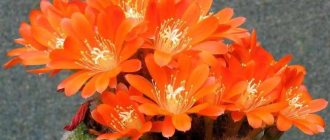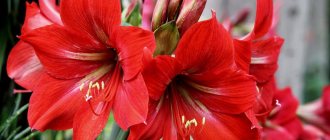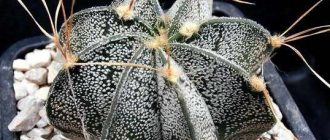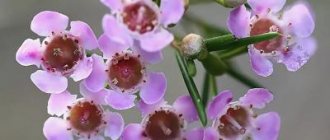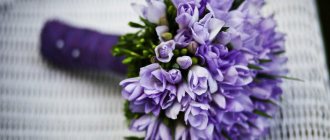Bulbous houseplants are different easy to care for, variety of shapes and colors, and many flowers of this species are among the most unpretentious flowering plants.
They are called bulbous because of their peculiar underground stem - the bulb, in which the plant stores nutrients and water for future growth and development. In addition, the bulb is used for propagation.
The bulbs are pear-shaped and formed by fleshy, juicy scales. By cutting the bulb lengthwise, you can see the rudiments of future leaves, which are located near the flower arrow.
The number of leaves of a bulbous plant is strictly determined by the number of these primordia, so you cannot thoughtlessly pick off the leaves of a flower.
Hello, dear friends!
Bulbous plants are a great success among flower lovers. And spring-flowering bulbous plants are the best decoration of the garden.
They paint the garden, awakened from sleep, with all the colors of the rainbow - from sunny yellow to dark purple, from soft blue to violet.
The world of bulbous plants amazes with its diversity, and if you choose the right bulbous plants, then we can admire them for six months, from early spring to late autumn.
Immediately after winter, flowers of small-bulbed primroses appear - snowdrops, chionodoxes, scillas (scylla), crocuses, muscari and others. I talked about these beloved colors in a previous article.
the daffodils , the first tulips , and the luxurious imperial hazel grouse begin to bloom .
The baton is picked up by decorative onions , blooming from late May to late July.
And in the summer we are delighted by the airy inflorescences of camassia , delicate ornithischians and, of course, fragrant majestic lilies .
In autumn, the last representatives of the bulbous species bloom - colchicum and autumn crocus .
Although the range of bulbous plants is very diverse, there are general rules for growing and caring for them. We will talk about these rules in this article.
Choosing bulbous flowers to grow at home
For winter forcing, it is better to choose flowers with a short awakening period - otherwise you may simply not wait for flowering. Small bulbs are perfect for this purpose: crocuses, pushkinias, muscari, chionodoxes, daffodils. It is also possible to grow tulips in a pot at home, but preference should be given to low-growing varieties. If you want to please yourself with hyacinths in winter, then choose small-flowered varieties.
If you are not an experienced gardener, then in order not to make a mistake, just buy bulbs marked “for forcing”. You can also choose varieties with the earliest flowering. For the first time, it is better to try growing crocuses - they are as simple as possible to force.
We purchase planting material
The best time to buy bulbs is when they are dormant - late July - September. When purchasing, be sure to check their condition. Bulbs must meet the following requirements:
- dense and heavy;
- shells intact;
- intact, without cuts or damage;
- without regrown roots and stems;
- The bottom is not damaged, without rot.
If you nevertheless bought bulbs whose stems and roots have begun to grow, then you need to immediately plant them in the ground.
The size of the planting material is also of great importance. Try to buy larger bulbs, then the plant will be stronger and bloom more profusely.
How to store it correctly
Before planting, bulbs should be stored in a cool and ventilated area (but not cold).
The bulbs of plants such as snowdrop, whiteflower, scilla, chionodoxa, and pushkinia are not covered with dry filmy scales, so we store them in slightly damp sawdust or peat in plastic bags.
Just don't forget to make holes in the bag to allow air access. It is advisable not to over-moisten the substrate in which the bulbs are stored, so that the plant does not begin to grow ahead of time.
The bulbs of hyacinths, daffodils, hazel grouse, tulips and decorative onions are not afraid of heat and even need it. A flower bud is formed in them at high temperatures and in dry conditions. But even here you need to know when to stop.
Bulbous perennials for the garden
Garden bulbous flowers: tulips, hyacinths, daffodils, crocuses
For the beauty of the garden area, bulbous perennials are indispensable. And this is especially true in the spring, when nature is just waking up and there is not enough color on the street yet. The nice thing is that these types of flowers are immediately large and anyone, even an inexperienced gardener, can get results.
A characteristic feature of these plants is the bulb - a modified shoot located underground, with fleshy scales growing from a compacted base. This thickened base is called the bottom. From this modified stem, roots emerge. Nutrients and moisture are accumulated in the scales, and then used during dry or too cold periods.
Tulip bulbs
Bulbs are divided into those that need to be dug up for the winter and stored in a cool, frost-free place. And also those who live in their place permanently. Many other types of flowers are difficult to compare with flowering bulbous perennials. It is also worth taking into account that they are one of the most unpretentious plants to care for. It is imperative to rely on bulbous flowers in your garden plot. Bulbs of various colors can be bought in specialized departments of garden centers, and also borrowed from familiar gardeners. After purchasing a bulbous plant, it can be propagated at home with great success.
When is the best time to plant?
We plant bulbs of plants that bloom in spring in September - early October. If the weather is warm for a long time in the fall, then planting is possible until the beginning of November.
But still, this work should not be delayed until frost.
Colchicums must be planted in August - early September and no later. After all, they should already bloom in mid-September.
Selecting a site for planting and preparing the soil
All bulbous plants do not like excess moisture. And therefore, the best soil for them is considered to be medium-heavy and moisture-permeable.
Bulbs can also be planted on sandy soil, as it drains water well. But first you need to increase its fertility by adding nutritious soil or compost.
If your soil is too dense, then in order to avoid stagnation of water and, as a result, rotting of the bulb, it is necessary to create an additional drainage layer in the planting hole.
To do this, pour coarse sand, crushed stone or gravel into the hole. The layer thickness should be approximately 4-5 cm.
To prepare heavy soil for planting bulbs, you need to dig it thoroughly, adding coarse sand or compost.
And one more important condition: under no circumstances replace compost with fresh manure! This usually leads to the bulbs becoming infected with fungal diseases.
Caring for bulbous plants
Bulbous flowers do not require special care, but ignorance of what necessary work needs to be done in the process of growing them can lead to the plant stopping blooming, getting sick or dying.
Top dressing
The first feeding of bulbous plants is done in March, when the snow has not yet melted.
To do this, use one tablespoon of nitrophoska per square meter. Repeated feeding with nitrophoska is carried out at the beginning of flowering. An excellent fertilizer is ash. Dilute a glass of ash in a bucket of water and water the plant, or sprinkle it with dry ash, but it must be immediately covered with soil so that many useful substances do not erode.
If you are a supporter of organic fertilizers, feed the bulbs with compost or humus. When fertilizing with manure or bird droppings, they must be diluted with water for irrigation in a ratio of 1:10. If you want to get beautiful leaves, you need to feed the flowers with nitrogen-containing fertilizers. However, it should be noted that with abundant foliage, the plant is more often affected by fungal diseases, mold and rot. To strengthen the roots and bulbs, potassium fertilizers are used; to obtain long-lasting and abundant flowering, they are fertilized with phosphate fertilizers.
Frequent feeding of bulbous plants with urea reduces their frost resistance.
It is recommended to fertilize flowers comprehensively, using nitrogen, phosphorus and potassium in different proportions depending on the type of soil. For sand it is 6%:18%:18%, for clay soils it is 12%:10%:18%. The first two times, fertilizers are applied after the snow melts and during the budding period, and the third time - during the flowering period, but without nitrogen-containing components. If you apply a large amount of fertilizer, this can cause development to stop and the formation of “babies”. Also, the plants will not tolerate wintering well.
Watering
Watering should be done moderately. Do not allow water to stagnate and form a crust. During the flowering period, the amount of watering needs to be increased. It is allowed to add soluble mineral fertilizers to water for irrigation. When planting bulbous plants, take into account the evenness of the area; do not plant them in low places where water constantly accumulates. Watering should be carried out with settled water at atmospheric temperature.
Propagation of bulbous flowers
Propagation of bulbous plants can be carried out in two ways: by seeds and by dividing the bushes.
- Propagation by seeds. Seeds are collected at different times, depending on the type of plant. Seed pods form after the petals fall. The seeds are collected, dried and immediately sown in trays or boxes with soil mixture, since they cannot be stored for a long time. When sown in autumn, winter or spring, plants grow resistant to low temperatures, since the seeds undergo stratification (hardening) during this period. In the spring, after seedlings emerge, they must be covered with film to retain moisture and prevent weed seeds from entering.
- Reproduction by dividing the bush. This type of propagation makes it possible to obtain flowers from a plant already in 1-3 years, whereas after propagation by seeds, flowering occurs only after 4-7 years. Dividing the bush involves separating the “children” from the main bulb and planting them separately.
Treatment of bulbs before planting
Before planting, it is recommended to pickle the bulbs in a solution of fundozol or another means to combat fungal diseases.
This is necessary in order to prevent in advance the development of various bulb diseases (fusarium, sclerotial rot, penicillium rot, bacterial rot).
Or you can treat the bulbs with a solution of potassium permanganate for 25-30 minutes. The solution is prepared at the rate of 5 g of potassium permanganate per 10 liters of water.
Landing according to the rules
At what depth should I plant?
There is a rule: we must plant the bulb at a depth that is 3 times greater than its height. Based on this, we plant bulbs of plants such as lilies, tulips, imperial hazel grouse to a depth of 15-20 cm, and if the bulbs are very large, then up to 25 cm.
We plant the bulbs of small-bulbous plants to a depth of approximately 5-10 cm.
You need to plant a large onion in the hole so that its bottom is directed straight down. And small onions can simply be sown.
Distance between bulbs
We plant large bulbs at a distance of about 12 cm from each other, and small ones at a distance of 5-7 cm.
Depending on the size of the bulbs, their number planted per 1 m2 ranges from 50 pieces (tulips, daffodils) to 400 pieces (small bulbs).
If we want the plantings to have a natural look, then we need to plant the bulbs at different distances from each other.
But if, on the contrary, we want to create the effect of a single flower field, then in this case it is necessary to plant the bulbs at the same distance from each other.
Methods of planting in flower beds
There are two main ways to plant bulbous plants when creating flower beds.
They are the main “actors”: a monochromatic or variegated seasonal composition is created entirely from bulbous flowers and, when they fade, the entire flowerbed is planted again, but with annual flowers.
Bulbous plants are planted in narrow strips among low shrubs and trees or among perennials, and in the spring they delight us with their beauty, filling the voids in flower beds.
And then, after they bloom, their withering leaves are hidden by other grown plants.
Planting bulbous plants
Bulbous flowers are planted in early spring, when the snow has just melted and the soil is still well moistened. Proper landing requires knowledge of some rules:
- Preparing the bulbs. If the bulbs overwintered in paper and not in the ground, they must be removed in early March and inspected. Throw away any that are too dry or rotten. If the rot spots are not large, they can be cleaned with a knife and treated with brilliant green. Keep them for several days in a one percent solution of potassium permanganate or a fungicide, such as Vitaros, which will provide the plants with immunity against various fungal infections. Next, the bulbs are planted for germination in separate pots.
- Planting bulbs for germination. Before planting the bulbs, you need to prepare the soil. To do this, mix 1 part garden compost, 1 part garden soil and a handful of bone meal. Place the bulbs in a pot with a drainage hole to a depth twice the height of the bulb. Sprinkle soil on top, leaving room for further addition of soil. When the sprouts rise 1-2 cm, it is necessary to add soil of the same composition. Flowers should be replanted to a permanent location after the onset of warm weather and the threat of frost has been eliminated.
- Transplanting flowers to a permanent place. When replanting, you should know that bulbous plants love well-drained soil and get sick from stagnant water. Sand or humus can be used as a drainage mixture. If the soil is too dense, it must be loosened a week before planting and added screenings or coarse sand. The hole should be rectangular, two to three times wider and deeper than the bulb itself. Small “children” are not planted deep. Do not leave any air between the bulb and the soil at the bottom of the hole. If the soil has high density, mix it with sand. Water the plant an hour before transplanting. Remove the bulb along with a lump of earth from the pot, lightly tapping its bottom and walls. If the roots are very twisted or tangled, they should be carefully cut off without disturbing the earth. Place the whole flower in the hole along with a lump of earth and sprinkle the sides with soil mixture, constantly compacting it with your fingers. Water the plant thoroughly.
- Planting bulbs without germination. If you plant bulbs directly into the ground without germination, choose a warm day for this, when the soil warms up to 10-15 degrees. When planting, make sure you plant the bulb right end up. The hole should be the same as when planting a sprouted onion. After covering the plant with soil, compacting it and watering it, level the planting site with a rake and mark the location of the flowers there.
Watering and shelter
If you plant bulbs in warm, dry weather, they should be watered immediately. Then the roots will grow faster and the plants will survive the winter well.
Bulbous plants are quite frost-resistant, but it is advisable to cover newly planted plants with fallen leaves or peat humus for the winter. Those that we planted later than others especially need this.
It is also necessary to cover the plantings in the absence of snow cover during severe frosts. In the future, bulbous plants no longer require shelter, and peat humus can be used as mulch.
During budding and flowering of plants, try not to let the soil dry out; water not often, but abundantly.
Pests and diseases of bulbous plants
Some of the most dangerous pests of bulbous plants are moles and rodents. They can completely destroy the plant, since the onions are very tasty and juicy for them. Voles often drag them into their holes, moles gnaw holes or tear out bulbs with roots when moving. A damaged plant will not develop well and will grow weak and deformed.
To scare away and exterminate rodents, bait traps are placed in the garden. However, if you feel sorry for killing animals, you can ward them off with the help of other plants that they do not tolerate - these are daffodils, black root and hazel grouse. You can spray the flowerbed with an infusion of valerian root or plant valerian officinalis in several places on the site. If you treat the soil around the flower with red pepper, this will scare away the mice. But the most effective way to repel rodents is with ultrasonic devices. In addition, they will not only avoid your flowerbed, but also will not make holes in it.
Cutworms and slugs cause a lot of damage to bulbous plants. Caterpillars of the cutworm pest are collected by hand in the fall, before transforming into pupae. If you do not do this on time, next year the caterpillars will multiply more and it will be more difficult to deal with them. Slug mollusks live in warm and moist soil, so in order to detect them and timely eliminate them, you need to regularly loosen the flower bed with bulbous flowers. If slugs have settled in your home and are spoiling your plants, you can get rid of them in this way: fill a plastic bottle with beer or apple juice and bury it in the flowerbed, leaving only the neck. The slugs will crawl towards the smell and fall into the bottle, but will not be able to get back out. Next, you just need to throw away the bottle. You can also plant strong-smelling plants such as parsley, sage, garlic or rosemary, which are not tolerated by caterpillars and slugs.
Another enemy of bulbous flowers is the bulbous nematode. This is a thin little worm that damages the bulbs or trunk of the plant. It spreads from plant to plant and multiplies quickly. If you notice yellow spots on the leaves or brown rings on the bulb, then your flower is affected. They cannot be treated; they must be urgently removed from the flowerbed so as not to infect healthy plants. To prevent worm damage to neighboring plants, dig up healthy bulbs and soak them in hot water for two hours. Then transplant it to another place. Bulbous plants are not planted in place of the diseased plant for 4 years. You can sow spinach or carrots, beets or grains on it. These plants will clear the soil of nematode worms.
Diseases
Diseases of bulbous plants include: viruses, fungi, mold, bacteria, and various types of rot.
- Viral diseases. If you notice that the leaves on your flower are curling and tubercles and pale spots appear on them, the plant has become infected with a virus. It must be destroyed quickly. However, the virus does not enter the seeds of infected plants, so they can be sown in the spring without fear.
- Fungal diseases and mold. Indicators of fungal diseases are black or brown spots on the leaves, the lower part of the plant is covered with a fluffy coating. These microorganisms appear in conditions of heat and high humidity. You can get rid of them by treating the flower with fungicides.
- Rotten. It is almost impossible to cure plants affected by rot, so they are destroyed. In addition, rot spreads very quickly. To prevent disease, you need to carefully inspect all the bulbs before planting, and avoid overwatering and stagnation of water when caring for the bulbs. Treat plants that grew with the patient with fungicides. Rot can be root, white, black, gray and brown. All of them lead to the death of the plant and infection of neighboring plants.
Do you need self-seeding?
Many bulbous plants can reproduce by self-sowing. On the one hand, many summer residents like this, but on the other hand, this chaotic and involuntary distribution of plants can disrupt the design of the flower garden you have created.
If you do not need self-sowing, then remove wilted flowers as early as possible. Leaves should be left as much as possible.
This way you can control the number of bulbs and create favorable conditions for the accumulation of nutrients for future flowering.
Possible difficulties
Bulbous flowers are one of the most common groups of plants on Earth. Many of these plants can be seen in parks and gardens of gardeners. They themselves come from a wide variety of climate zones. This is what causes them to be capricious or excessively tender.
Most of the new varieties bred by breeders have huge inflorescences, but very thin stems. It looks beautiful in a flowerbed, but it happens that with a strong wind the plant can fall to the ground; the stem, which is too thin, cannot stand it and breaks. Such troubles can happen with double daffodils and freesias. Gladioli are also susceptible to such unpleasant incidents, since the varietal species have too powerful a flower arrow, on which large inflorescences abound. This becomes too heavy a burden for the bulb and breaking occurs at the point of growth. Therefore, it is necessary to tie up some types of plants.
When is a transplant required?
Bulbous plants can grow in one place for several years. The need for transplantation arises if the nests of bulbs have grown too much and interfere with each other, and the feeding area becomes insufficient and the flowers will be much smaller.
Plants that multiply quickly (crocus, scilla, chionodoxa, muscari) need to be replanted already in 3-4 years.
And, for example, hazel grouse and kandyk, which reproduce slowly, can grow in one place for 6-8 years without transplanting.
Plants can be replanted only when the above-ground part dies off completely.
The dug up bulbs must be cleaned of old scales and roots and laid out in one layer in a dry, well-ventilated area.
Until next time, dear readers!
Rules for watering indoor bulbs
When growing bulbs, first of all, you should think about the quality of water. Whatever plant we are talking about, you can only use settled, not cold water, the characteristics of which will not lead to the accumulation of salts in the soil.
For all bulbous plants, rain and melt water are considered the best. The water temperature should not be equal to the air temperature in the room, but several degrees higher than it. If the plants are afraid of hypothermia or are particularly capricious, then it is better to raise the indicators by 5-6 degrees. The minimum permissible water temperature for watering indoor bulbous plants, below which values should not fall even for crops that winter in cool conditions, is +20 degrees for subtropical species and +23 degrees for tropical species.
There are many nuances in the watering procedure for bulbous plants that are also worth paying attention to:
- Watering should be careful, slow and controlled.
- Water can be poured only along the edge of the containers, and not in the center, under the plant, trying to ensure that water does not directly fall on the base of the stems, leaves, peduncles, or bulbs.
- Watering is carried out so that the water does not spread over the surface, but is immediately absorbed into the soil.
- It is better to water by dividing the water into several portions, checking how the substrate is soaked after each portion, and monitoring the appearance of water in the pan.
- The water from the trays for any bulbous plant is drained immediately, and after 5-10 minutes the water is checked again for the presence of excess water.
- It is better to water bulbs not in the middle of the day or in the evening, but in the early morning.
- Regular checks of the plant, monitoring how the soil dries out, is preferable to a strict schedule of water treatments.
For all bulbous plants, it is much easier to use bottom watering methods than classical methods. Bulbous plants also grow well when using various automatic watering methods that control the degree of soil drying. Installing humidity indicators simplifies the control process.
Bulbous plants develop and bloom best at medium or medium-high air humidity. © Caroline
